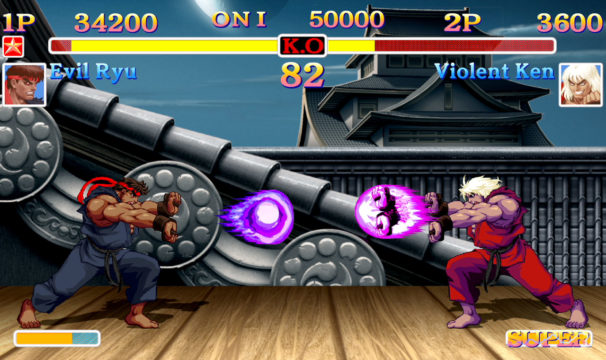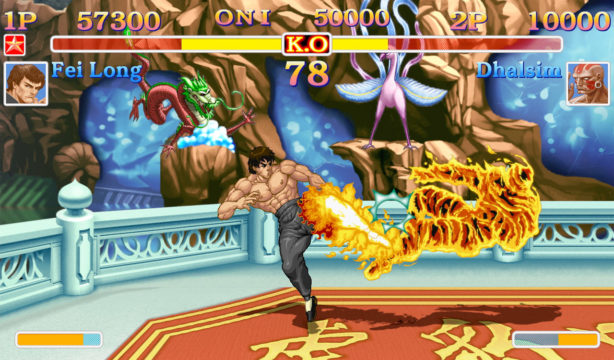Strong presentation; tight controls; online is solid; return to old-school play style is a great entry point for new players and a wonderful return for old ones; the art book is excellent
Way of the Hadoken is just plain bland; simplified play will be less appealing to hardcore and tournament players; two player battle mode is fleeting
Ultra Street Fighter II: The Final Challengers is going to be divisive, but perhaps not for the reasons that some people might think. The game is built off of the excellent 2008 release Super Street Fighter II: Turbo HD Remix, which dropped on PlayStation Network and Xbox Live. HD Remix was most notable for the collaboration between Capcom and Udon Entertainment, a Canadian comic book publisher. Udon’s stable of artists redrew every asset from Super Street Fighter II Turbo, making the entire game look like a comic book brought to life. Along with tweaks to character balancing, HD Remix represented the then-definitive take on the classic fighting game. Until the release of Ultra Street Fighter II, that is.
This marks the first time since Super Street Fighter IV: 3D Edition hit 3DS that a Street Fighter title has landed on a Nintendo platform. While Ultra brings with it all of the graphical flair that HD Remix introduced, it also has taken the gameplay back closer to what it was in Turbo on SNES. HD Remix introduced some changes to character balance and moves to help modernize the game, which itself was controversial at the time. Now, Capcom is taking an opposite approach by developing the title in-house and re-simplifying much of the gameplay. While that’s not all that Ultra brings to the table, it is at the core of the experience and will prove to either lure in or scare away players.

In a nutshell, Ultra will feel very simplistic when compared to contemporary fighting games. Heck, even some of the fighting games released in Hamster’s ACA series of NeoGeo titles will feel more nuanced than what’s on offer in Ultra. Yet, that’s part of the goal behind Ultra—it’s intended to be an entry point for new players. The fighting game genre can be very intimidating to newbies. Combos, guard breaks, air dodges, and a ton of different terms, moves, and techniques beyond that are regular features of fighters, and for some it can be almost impossible to get a foot in the door without becoming overwhelmed. With the release of Ultra, players are able to return to the nascent days of the genre, a time when things were simpler and more players were standing on equal ground.
As someone who is rudimentary level at best when it comes to Street Fighter, I felt like Ultra was aimed right for players like me. I can fire off a Hadoken easily enough, but competitive play is far beyond my abilities. Ultra, with its simplified gameplay, is an easy glove to slip on for new and inexperienced players. I sat and replayed HD Remix side-by-side with Ultra for comparison’s sake and found the latter to be a touch slower paced and easier to get into; though it looks very much the same, Ultra has its predecessor beat in terms of accessibility. That’s not to say the game is without depth—blocks, Special moves, and a variety of combos are all on offer, and the more you learn each character’s intricacies the easier it becomes to learn how to defend against them, and go on the offensive. Still, it’s the fact that everything has been pared down to its simplest form is a big part of Ultra‘s allure. With a Training Mode built into the game, fans have ample opportunity to learn the ins and outs of old-school Street Fighter.
The question then becomes, however, whether or not it’s worth it for seasoned Street Fighter fans to invest in Ultra if it’s such a throwback to the days of old. That is a question that I don’t think can be definitively answered. For the ultra-competitive, it might not be worth the money or time to go so far backwards into the roots of the series. As fun as the gameplay in Ultra is, it isn’t nearly as technical as virtually every single other fighter currently on the stands, which might be a negative for those who enter into tournaments and other competitions. However, for diehard Street Fighter fans, Ultra should still prove to be a very tempting package. Along with the Udon remastered assets, there’s also the ability to switch back to the pixelated visuals of yore, along with a more classic take on the soundtrack, too. Combine that with the classic gameplay and old-school SF fans will be hard pressed to ignore Ultra.
Beyond the core game there are other bells and whistles on offer. Online play, which was smooth and competent during my playtime, is a contemporary addition that is greatly appreciated. For competitive players it’s a godsend, allowing fighters all across the world to test their mettle against one another. Playing the game on the go is another benefit of this iteration of the game and something that only Switch can offer, and it’s certainly a boon to this iteration of Street Fighter II. I’ll admit that detaching the Joy-Cons to play isn’t ideal, however; the controllers are simply a bit too small to handle the rigors of a fighting game like this, even with a wrist strap attached. It’s workable, but imperfect—I’d suggest sticking to using both Joy-Cons together and a Pro Controller for multiplayer mayhem, if possible.

Ultra’s other selling points are where things really start to become polarizing. For one, the first-person Ryu sidequest “Way of the Hadoken” is a lightweight motion control affair that doesn’t add much of anything to the experience. It’s purely a gimmick and not one that’s likely to maintain the attention of anyone for all that long. There’s also a full and interactive copy of SF20: The Art of Street Fighter for fans to flip through on the Switch’s touch screen; it’s a wonderful bit of history to go through for fans of all stripes, though how much mileage one will get out of it is going to vary heavily from fan to fan. Finally, the two player buddy matches are fun, but the mode doesn’t last long; it’s so fleeting that it’s curious why Capcom bothered to throw it in at all. These extras, beyond the balancing tweaks to the game’s fighting engine, comprise all that Ultra has to offer other than the main game.
As I stressed above, the question of Ultra‘s worth is hard to peg. Some might be thrilled to have yet another iteration of Street Fighter II to tool around with, while others will be less than pleased to play this decades-old game once more. In my opinion, Ultra is a solid experience, boasting gorgeous visuals, tight controls, and some fun pickup-and-play multiplayer, whether online or off. Hardcore tournament competitors will most likely get the least amount of enjoyment from Ultra, but for everyone else this is an excellent entry point for newbies and a fine return for old school players. Though the extras on the cartridge are hit or miss, this is an overall wonderful addition to Switch’s library.




 ShareThis
ShareThis





